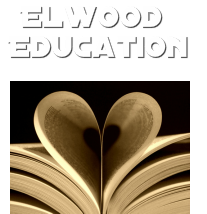ESSAY QUOTES / BLUE SHEET
The instruction sheet accessible via the button below provides MLA guidelines for a variety of quote structures and examples to illustrate the instruction.
Here is a sampling of what you will find:
Here is a sampling of what you will find:
- Page and paragraph numbers
- Author names in your sentences or in your parenthetical reference
- When to put the parenthetical information at the end of the sentence
- When to put the parenthetical information directly after the quote
- How to punctuate in both of the above options
- How to quote someone from another author's work, using the "quoted in" structure
- How to combine page numbers with additional information
Here is a brief sample to show punctuation placement within various sentence structures. Use the button above to learn much more.
In example 1, you use a comma because "and" connects two independent clauses. MLA prefers placing the parenthetical reference at the end of the sentence. Periods and commas go inside quotation marks.
1. "The day began as any other," and then the character walks naively into chaos (17).
BTW -- Never quote anything as ordinary as this unless you have a substantial reason to do so. Only use quotes that elicit discussion, so you can dance with them. If you have nothing to say about a quote, paraphrase the idea and/or find a better passage to quote.
In example 2, you use a semicolon because there is no coordinating conjunction between the two independent clauses. In this sentence, clauses are connected with a conjunctive adverb. Semicolons and colons go outside quotation marks.
2. "The day began as any other"; nevertheless, the character walks naively into chaos (17).
In example 3, you place the page number after the quote because the sentence ended.
3. "The day began as any other" (17). Nevertheless, the character walks naively into chaos.
In example 4, you place the page number after the quote because the following ideas belong to the essayist, not the literature or source.
4. "The day began as any other" (17); nevertheless, the juxtaposition of immediate, horrifying chaos quickly escalates tension. Considering the overall eerie mood in this scene, the author's lackadaisical nonchalance suggests a disengaged or perhaps sarcastic tone.
In example 1, you use a comma because "and" connects two independent clauses. MLA prefers placing the parenthetical reference at the end of the sentence. Periods and commas go inside quotation marks.
1. "The day began as any other," and then the character walks naively into chaos (17).
BTW -- Never quote anything as ordinary as this unless you have a substantial reason to do so. Only use quotes that elicit discussion, so you can dance with them. If you have nothing to say about a quote, paraphrase the idea and/or find a better passage to quote.
In example 2, you use a semicolon because there is no coordinating conjunction between the two independent clauses. In this sentence, clauses are connected with a conjunctive adverb. Semicolons and colons go outside quotation marks.
2. "The day began as any other"; nevertheless, the character walks naively into chaos (17).
In example 3, you place the page number after the quote because the sentence ended.
3. "The day began as any other" (17). Nevertheless, the character walks naively into chaos.
In example 4, you place the page number after the quote because the following ideas belong to the essayist, not the literature or source.
4. "The day began as any other" (17); nevertheless, the juxtaposition of immediate, horrifying chaos quickly escalates tension. Considering the overall eerie mood in this scene, the author's lackadaisical nonchalance suggests a disengaged or perhaps sarcastic tone.
